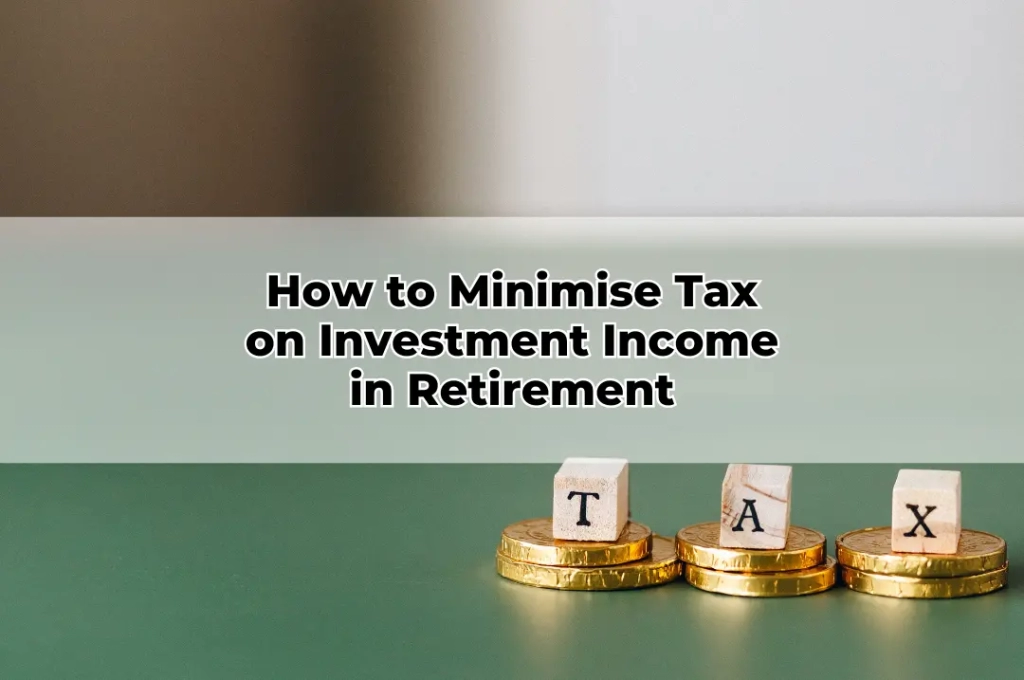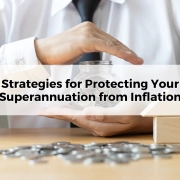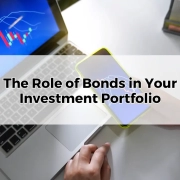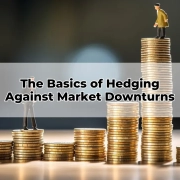How to Minimise Tax on Investment Income in Retirement
Table of Contents
ToggleRetirement should represent the culmination of a life’s hard work—not a financial burden due to poor tax planning. As a Toowoomba Financial Adviser, one of the most significant areas where retirees can maximise their income is through strategic tax minimisation. In the retirement phase, managing investment income tax-effectively is not simply about saving money—it’s about preserving capital, sustaining lifestyle choices, and maintaining financial autonomy. Many Australians underestimate how much tax can erode their nest egg in the absence of a structured plan. Through intelligent financial structuring and the use of legislated strategies, retirees can substantially reduce their tax obligations, ensuring more of their investment income remains in their pocket.
Investment Income in Retirement
Investment income in retirement may include interest, dividends, rental income, distributions from managed funds, and capital gains. Each of these is treated differently by the Australian Taxation Office (ATO), and understanding these differences is essential. For instance, interest and rental income are taxed at marginal rates, while franked dividends come with imputation credits. Superannuation income streams, if properly structured, can often be tax-free for those aged over 60. The interplay between these types of income and your tax position can either be a boon or a burden. A comprehensive understanding lays the foundation for strategic action.
The Power of Tax-Free Superannuation Income Streams
One of the most powerful tax tools available to retirees is the tax-free status of superannuation income streams once an individual reaches age 60. Account-based pensions, when structured correctly, provide a regular income while shielding earnings from tax—both on the income drawn and the investment earnings within the fund. This places superannuation at the centre of effective retirement planning. Importantly, balance caps and transfer limits must be observed to avoid unnecessary tax liabilities. Maximising the tax-free threshold by allocating as much as possible to pension phase accounts is a cornerstone of strategic retirement tax planning.
Asset Location: Holding Investments Inside or Outside Super
Where you hold your investments—inside superannuation or in your personal name—can have a profound impact on the tax payable. Assets held in super typically enjoy concessional tax treatment, while personal investments can attract marginal tax rates. Strategic asset location means placing income-generating assets in the most tax-efficient environment. For high-income earners transitioning into retirement, shifting assets into super before retirement can significantly reduce future tax liabilities. Conversely, franking credits may be better utilised in personally held structures if the individual is on a low marginal tax rate. Balancing asset location requires precision and foresight.
Leveraging Franking Credits from Australian Shares
Franking credits, also known as imputation credits, are a powerful mechanism unique to Australia. They represent tax already paid by Australian companies on profits distributed as dividends. If your marginal tax rate is below the company tax rate—such as in retirement—these credits can be refunded or offset against other tax liabilities. For retirees drawing an income from an Australian equities portfolio, the effective yield can be significantly enhanced by these credits. A deliberate allocation toward fully franked shares, when appropriate, can deliver tax-effective income and potentially a tax refund from the ATO.
Utilising the Seniors and Pensioners Tax Offset (SAPTO)
The Seniors and Pensioners Tax Offset (SAPTO) provides eligible retirees with a higher effective tax-free threshold. This offset is particularly beneficial for individuals and couples with modest levels of taxable income outside of superannuation. When combined with the low-income tax offset, SAPTO can shield a reasonable amount of income from tax entirely. However, income testing thresholds apply, and understanding these limits is essential to fully optimise the benefit. Financial Planning Toowoomba professionals are well-versed in integrating SAPTO into a broader tax strategy to ensure retirees avoid unnecessary taxation.
Minimising Capital Gains Tax Through Strategic Timing
Capital Gains Tax (CGT) applies when assets such as shares, property, or managed funds are sold at a profit. For retirees, carefully timing the sale of these assets is vital. The 50% CGT discount is available for assets held over 12 months, and spreading disposals across multiple financial years can help manage the taxable impact. Moreover, retirees with low taxable income can take advantage of unused tax thresholds to realise gains with little or no tax payable. Working with an Online Financial Adviser enables retirees to model CGT scenarios and time realisations for optimal outcomes.
Gifting and Asset Reduction Before the Age Pension Age
Reducing assessable assets prior to applying for the Age Pension can indirectly reduce taxable income by making you eligible for Centrelink payments or concessions. While gifting is subject to strict rules—currently $10,000 per financial year or $30,000 over five years—it can be used judiciously to reposition wealth. This may involve gifting to children, grandchildren, or into trust structures. However, exceeding allowable limits can result in the gift being treated as a deprived asset, so precision is paramount. Engaging a qualified Toowoomba Financial Adviser ensures that asset reduction is carried out within regulatory confines.
Transition to Retirement (TTR) Strategies for Pre-Retirees
For those still working but nearing retirement, a Transition to Retirement (TTR) strategy can offer a tax-efficient bridge. TTR pensions allow access to superannuation while still employed, and can be used to supplement income while salary sacrificing into super to reduce taxable income. Although earnings on TTR accounts are taxed at 15%, the overall tax effect—especially when paired with concessional contributions—can be significantly positive. TTR strategies require detailed cash flow planning and a sound understanding of contribution limits, but when implemented correctly, they offer both tax relief and superannuation growth potential.
Strategic Use of Tax Offsets and Low-Income Thresholds
Beyond SAPTO, retirees can also benefit from other tax offsets such as the low-income tax offset and franking credit refunds. The interplay between these concessions can be highly advantageous for those with modest taxable income. For example, a retiree receiving franked dividends may end up with a tax refund even if no tax was paid. Proper coordination of investment withdrawals, superannuation pensions, and personal investments ensures that taxable income is kept within thresholds where offsets and rebates are maximised. Timing and allocation of income sources is key to this approach.
Establishing a Tax-Free Income Bucket Strategy
The bucket strategy segments a retiree’s assets into short-term, medium-term, and long-term income pools. The short-term bucket provides liquidity and is often held in cash or term deposits. The medium-term bucket may consist of conservative investments such as bonds, while the long-term bucket holds growth assets. By managing drawdowns from each bucket according to market conditions and tax efficiency, retirees can mitigate sequence risk and reduce overall tax liability. Drawing income from the tax-free pension phase of super, then topping up from lower-taxed investments, creates a smooth and efficient income stream.
Estate Planning Considerations to Reduce Tax on Death
Upon death, the tax treatment of superannuation benefits depends on the recipient. Payments to tax dependants such as spouses or minor children are generally tax-free, but distributions to adult non-dependants may be taxed up to 17%. Strategic estate planning—such as drawing down taxable super while alive or nominating appropriate beneficiaries—can reduce or eliminate tax upon death. Testamentary trusts, re-contribution strategies, and equalising asset distribution can further mitigate estate taxation. Retirement Financial Advice must go beyond the retiree’s lifetime to ensure their legacy is preserved without unnecessary tax leakage.
Engaging a Financial Adviser for Tailored Tax Optimisation
Navigating the complexities of tax in retirement is not a one-size-fits-all exercise. It demands bespoke planning, detailed knowledge of the Australian tax system, and an understanding of legislative nuances. As a Toowoomba Financial Adviser and SMSF Specialist, I work with clients to craft personalised strategies that optimise every dollar of income. Whether through superannuation planning, asset structuring, or timing of investment disposals, tailored advice can dramatically enhance after-tax income and financial peace of mind. For retirees, the cost of inaction or poor structuring can be substantial—engaging an expert is an investment in financial confidence.
Conclusion
Minimising tax on investment income in retirement is more than a tactical exercise; it’s a strategic imperative. With the right structure, timing, and expert guidance, Australian retirees can legally and efficiently retain more of their income, preserve capital, and secure their financial independence. From superannuation optimisation to franking credits and asset location, the opportunities to enhance after-tax outcomes are considerable. Engaging a qualified Financial Adviser in Toowoomba ensures that you are not leaving your retirement income strategy to chance.









